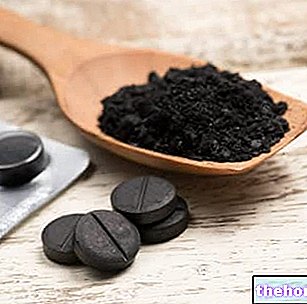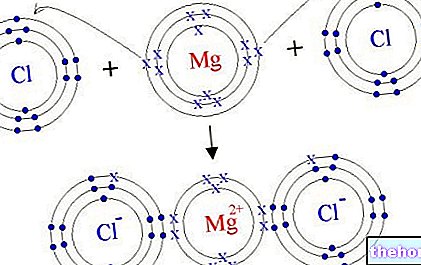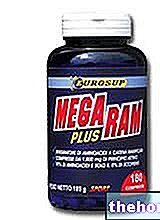
About Omega Max 1000 - Eurosup
OMEGA MAX 1000 - EUROSUP
Food supplement of highly concentrated omega 3 essential fatty acids
FORMAT
Pack of 100 capsules
COMPOSITION
Fish oil concentrated in EPA and DHA (obtained by molecular distillation); Gelatin; Resistance agent: glycerol; Essential oils of orange (Citrus Sinenesis) and lemon (Citrus Limon); Oily extract of rosemary (rosmarinus officinalis, leaves) in sunflower oil; Natural Vitamin E supported on sunflower oil. The product contains traces of soy lecithin
Nutritional indications
Per daily dose (2 cps)
% RDA
EPA
660 mg
-
DHA
440 mg
-
Vitamin E
1.8 mg
15
Omega 3 content in fish oil
EPA
33%
DHA
22%
Other Omega 3s
15%
Total Omega 3
70%
Product features Omega Max 1000 - Eurosup
The fatty acids present in this product are extracted through molecular distillation from fish oil, then enriched with Vitamin E to protect them from any oxidation processes. Analyzing the label, in a 1 gram tablet we find about 550 mg of omega fatty acids 3, distributed between EPA and DHA. Unfortunately, the supplement lacks IFOS certification, an international body that defines the quality criteria of the product based on omega 3 according to the extraction methods, the source of origin and the levels of contaminants and purity.
Omega 3 fatty acids: not being synthesized by the human body, and playing a vital role in its life, they belong to the category of essential fatty acids, so they must necessarily be taken through the diet.
To the class of essential fatty acids of the omega-3 series belong:
- Alpha linolenic acid (ALA): mainly of vegetable origin, it is particularly present in walnuts, oil and linseed, hemp and canola.
- Eicosapentaenoic acid (EPA) and docosahexaenoic acid (DHA), present instead in products of animal origin such as fish and in some vegetables such as algae; these two fatty acids can be synthesized in minimal quantities by the human organism starting from alpha linolenic acid.
Omega-3 are polyunsaturated fatty acids, therefore characterized by the presence of double bonds starting from carbon in position 3. Their daily requirement - estimated on average around 2 grams - could be satisfied without too many problems through a healthy diet, which includes "intake of at least 4 weekly portions of fish or through the introduction of nuts or certain vegetable oils into the diet." Unfortunately, from recent nutritional surveys, it emerges that Western diet is characterized by a reduced consumption of these nutrients, accompanied by an excessive intake of omega 6 fatty acids with a ratio between the two categories that is close to 1:20. This ratio, which is very different from the ratio 1: 2 - 1: 6, recommended by the international health authorities, could partly justify the very high incidence of cardiovascular accidents and associated chronic diseases.
The effectiveness of a correct integration, in fact, would be oriented precisely to the optimization of this relationship, with a consequent preventive and therapeutic action against:
- Cardiovascular pathologies such as hypertension and arrhythmias;
- Metabolic disorders such as diabetes and hypertriglyceridemia;
- Inflammatory diseases of various kinds;
- Nerve disorders such as depression.
Although several studies seem quite in agreement in underlining the efficacy of supplementation with omega 3, the detailed description of the molecular events responsible for this effect is still missing. In general, the various scientific evidences show a dual role concretized both in the modulating action of the intracellular signal. , which in the reorganization of plasma membranes.
Omega three and sport - Omega Max 1000 - Eurosup
The various studies in the literature and the potential benefits described in various pathological conditions, have led various experts in the field to test the effects of a possible integration of omega three on the physical and psychological condition of individuals undergoing training.
Naturally, it is necessary to consider supplements of this kind for their biological role, and not to expect effects or rather "magic" that are difficult to achieve; it is in fact commonplace to attribute miraculous effects to such supplements that are not even supported by pure THEORIES, only to be disappointed when these do not materialize. Therefore, in the light of these considerations, it is possible to re-read the various studies and identify the possible fields of sporting application in which the possible integration with omega 3 could be useful.
More precisely, studies have shown how correct supplementation can:
- Increase concentration skills and reduce reaction times in karateki;
- Improve the contractile capacities of the heart and reduce vascular resistance, facilitating blood transit and consequent oxygenation during exertion;
- Improve ventilatory skills during and after physical exertion;
- Reduce the feeling of fatigue following eccentric muscle contraction (although there are conflicting studies and opinions on this).
As you can see, therefore, there are no studies documenting an improvement in performance or an increase in muscle mass, so you shouldn't expect similar capacities from these nutrients.
Method of use recommended by the company - Omega Max 1000 - Eurosup
Swallow 2 capsules a day, preferably with main meals.
Method of use in sports - Omega Max 1000 - Eurosup
The research in the literature shows quite different dosages, however close to the daily requirement indicated by international organizations. In fact, given the objective of rebalancing the ratio between omega 3 and omega 6, it would be completely useless to use excessive dosages, which would certainly determine a reduction in the effectiveness of this supplement.
Consequently, the dose between two and four grams per day seems to be the most used, even if there are studies carried out with decidedly higher doses, which even exceed 6 grams / day, in the literature. The integration shows the first results already after 4 weeks, even if many jobs prefer to extend the supplementation up to 12 weeks. In reality, in the light of what has been said, if the intake with food is insufficient, this integration could also be prolonged. for some time.
Given the lipid nature of the compounds, it would be useful, for the purpose of improving intestinal absorption, to take the supplement during meals.
Synergies - Omega Max 1000 - Eurosup
Several studies show a greater efficacy of action by associating the omega 3 with antioxidant substances capable of assisting the protective action on the stability of the plasma membranes.
Furthermore, in order for supplementation to guarantee the effects described, the diet must also follow the general principles of a healthy diet and be accompanied by controlled physical exercise.
Omega Max 1000 Side Effects - Eurosup
Excessive intake of omega 3 can be associated with immediate phenomena such as nausea, vomiting, heartburn and erythema, and with systemic effects of a different nature.
In the literature, cases of bleeding are described (due to the "anticoagulant action of omega 3); therefore, attention should be paid to any interactions with aspirin or other anticoagulants, and in the case of haemophiliac pathology or changes in the glycemic profile in patients with non-insulin diabetic pathology. employee.
It should be reiterated that the dose between 2 and 5 grams per day seems to be quite safe, and without the aforementioned side effects.
Precautions for use Omega Max 1000 - Eurosup
The product is contraindicated in cases of renal or hepatic pathology, cardiovascular disease and / or hypertension, allergies and autoimmune diseases, during pregnancy, during lactation, under the age of 12 and for adolescents not yet trained.
In case of prolonged use (over 6/8 weeks) the doctor's opinion is necessary.
This article, elaborated on the critical rereading of scientific articles, university texts and common practice, is for information purposes only and therefore has no medical prescription value. It is therefore always required to consult your doctor, nutritionist or pharmacist before undertaking the use of any supplement.. Learn more about the critical analysis of Omega Max 1000 - Eurosup.
J Am Coll Nutr. 2009 Aug; 28 Suppl: 473S-481S.
Effect of omega-3 and policosanol supplementation on attention and reactivity in athletes.
Fontani G, Lodi L, Migliorini S, Corradeschi F.
Int J Sport Nutr Exerc Metab. 2009 Oct; 19: 536-46.
Nieman DC, Henson DA, McAnulty SR, Jin F, Maxwell KR.
Nutr Res. 2009 May; 29: 305-12.
Ramel A, Pumberger C, Martinéz AJ, Kiely M, Bandarra NM, Thorsdottir I.
J Sci Med Sport. 2010 Mar; 13: 281-6. Epub 2009 Jun 12.
Tartibian B, Maleki BH, Abbasi A.
Clin J Sport Med. 2009 Mar; 19: 115-9.
Tartibian B, Maleki BH, Abbasi A.
Eur J Appl Physiol. 2008 Oct; 104: 455-61. Epub 2008 Jun 18.
Walser B, Stebbins CL.
J Sci Med Sport. 2009 Jul; 12: 503-7. Epub 2008 Jun 13.
Buckley JD, Burgess S, Murphy KJ, Howe PR.
Curr Sports Med Rep. 2007 Jul; 6: 230-6.
Simopoulos AP.
Am J Clin Nutr. 2007 Mar; 85: 803-7.
Högström M, Nordström P, Nordström A.
J Psychiatr Res. 2008 Jan; 42: 58-63. Epub 2006 Oct 30.
Huang SY, Yang HT, Chiu CC, Pariante CM, Su KP.
Eur J Appl Physiol. 2004 Aug; 92 (4-5): 584-91. Epub 2004 Mar 30.
Huffman DM, Altena TS, Mawhinney TP, Thomas TR.
Crit Care Clin. 2010 Jul; 26: 501-514.
Stapleton RD, Martin JM, Mayer K.
J Alzheimers Dis. 2010 Jul 15. [Epub ahead of print]
Huang TL.
Cardiovasc Ther. 2010 Aug; 28: 202-15.
Badimon L, Vilahur G, Father T.
Cell Mol Biol (Noisy-le-grand). 2010 Feb 25; 56: 28-37.
Calder PC, Yaqoob P.
BMC Cardiovasc Disord. 2010 Jun 3; 10: 24.




























